Summary
Yes. Tracking studies have shown that even juvenile hedgehogs with little or no experience living in the wild can cope with release. Subjects often experience a decrease in weight immediately following release, but this is thought to be the shedding of excess weight built up while in captivity. Released animals seem to resist homing in most cases, quickly settling into their surroundings and building a nest; they also travel about the same distances as wild conspecifics, interact with the wild population without any obvious aggression and mate with wild individuals. Captive-reared or rehabilitated hedgehogs seem just as vulnerable to predators and accidents (e.g. drowning, being killed on roads etc.) as those that have not spent any time in captivity and some mortality is to be expected. The only possible problem could be that captive individuals become used to handling by humans, and this might lead to a greater risk of death under wild conditions – this hasn’t been proven, but it is something to take into account when rearing a hedgehog, or preparing one for release.
Before release, the site should be chosen carefully to ensure that it represents good hedgehog habitat, with parks, large gardens, cemeteries, golf courses, and so forth, falling into this category. Release should take place on a mild or warm night, ideally in damp/muggy conditions and ideally away from badger setts or busy roads. According to the British Hedgehog Preservation Society, hedgehogs should weigh at least 500g (1 lb. 2 oz.) prior to release, 600g (1 lb. 7 oz.) if being released during late autumn or early winter and be in good physical condition. In their Hedgehog Hibernation Weight - A Collaborative Review, published on the BHPS website, the BHPS, British Wildlife Rehabilitation Council (BWRC), RSPCA and Vale Wildlife Hospital note that greater weights (i.e. more than 600g) may enhance survival, but there is no evidence for this and that “No specific weight will guarantee survival”.
The details
The end goal for almost everyone who cares for injured wildlife is to see their charges scurry, run, waddle, fly or swim off into the sunset. While releasing an animal back into the wild may be desirable, however, it is often fraught with difficulties. If the animal was born and raised in captivity it may not have developed those skills so essential for survival in the wild. It may not be able to adjust to social situations or, worse still, it might not be able to find food.
These issues aren’t just a problem for the animals; they’re also a problem for those caring for and releasing them. In the UK (excluding Northern Ireland), the Abandonment of Animals Act (June 1960) makes it a criminal offence to leave an animal "in circumstances likely to cause the animal any unnecessary suffering". While one might be inclined to argue the term “unnecessary”, abandoning an animal that is unable to fend for itself is treated as an act of “cruelty”, as set out by Section 1 of the 1911 Protection of Animals Act. As Pat Morris puts it in The New Hedgehog Book: “Release of a three-legged rabbit or squirrel would be to condemn it to an early death at the teeth of some predator.” I’m not sure I agree entirely with this statement; but it sums up the crux of the situation nicely.
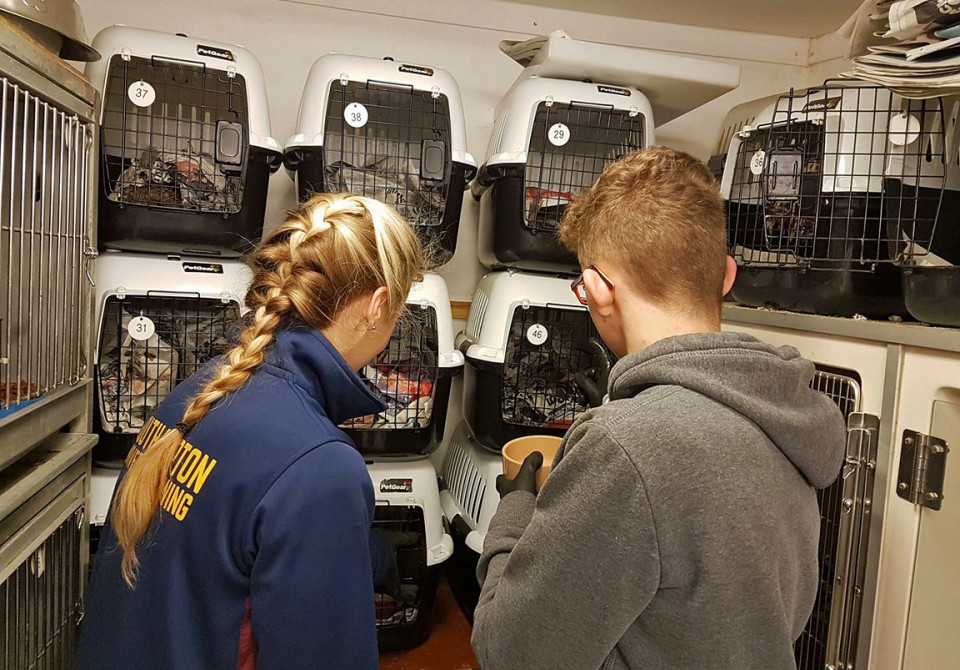
Strictly speaking, it is difficult to see how anyone can be sure that the animal they release is going to integrate back into the wild. After all, most British mammal species are nocturnal or reclusive, usually both, and most carers will never see their patients again. This, coupled with the fact that most rescues don’t have the time, manpower or resources to track each of their releases, means carers must rely on the science we do have, coupled with their own experience and judgement.
The first steps
Until relatively recently it was largely unknown whether hedgehogs released back into the wild did well or not. This changed in the summer of 1989, when a team of zoologists at the University of London zoologists, led by Pat Morris, radio-tracked two male and two female hedgehogs rehabilitated at the Wildlife Hospitals Trust in Aylesbury and released into the mixed deciduous woodland of Malham Tarn in Yorkshire. Unfortunately, financial constraints saw the study terminated earlier than expected, but Morris and his team still managed to follow the hedgehogs and monitor their body weights for 13 consecutive nights. The hedgehogs were fitted with a small radio transmitter before being ‘soft released’ (i.e. food was left out for three nights after the release). One of the males died on the fifth day after having apparently become sick, but the zoologists presented the data for the remaining three animals in a paper to the journal Field Studies in 1992.
The University of London data showed that all three animals ranged widely; the male covered almost double the area (17 hectares) of either female (6 and 9.5 hectares) in 12 nights. Moreover, while the male’s range encompassed most of that of the released females, it also included at least part of the home ranges of the five wild females with whom the researchers observed him courting. One of the females and the male both underwent significant declines in body mass: the female lost 36% of her body weight and was still losing weight when the study ended, while the male lost 12% of his release weight. The second female managed to maintain her body weight at a fairly constant level, losing only 6% of her release weight.

Following the initial tracking period, the biologists tested the ‘homing’ skills of the hedgehogs and moved the females on to “tightly-grazed grassland” nearby. One female spent 2.5 hours on the grassland before she found her way back to her nest; when she was moved again on the following night she also made her way back. The second female was apparently more disturbed by her new surroundings and spent more than an hour looking for a suitable nest site among some rocks; on the second night she entered a nearby plantation where she built a nest and was later found with a wild male. Overall, Morris and his colleagues concluded that despite the weight loss, which they attributed to dry conditions causing a shortage of food (in the male’s case, sexual activity probably also contributed to the weight loss), captive hedgehogs released back into “good hedgehog habitat” seem to settle quickly, expanding their range and adapting readily to their new surroundings.
The weight loss that Pat Morris and his team observed was cause for concern and it was decided that a longer study was required, ideally with a larger group of animals. Over a period of two months from July to September 1991 biologists from the University of London monitored the fortunes of eight hedgehogs rehabilitated at RSPCA centres and hard released (i.e. no food or nest boxes left at the site) on to a lawn at Flatford Mill Centre in Suffolk, a site surrounded by farmland. The results of this study were published in Animal Welfare during 1993 and showed that one animal died from what was considered to be its original ailment, while two survived for seven weeks before dying in accidents; one was run over after travelling some 2km (about a mile) south and putting on weight, and the other drowned.
Contact was lost with four animals, although circumstantial evidence, in the form of phone calls from the public following a newspaper article, suggested that they were still alive at least five weeks into the study. When the study finished eight weeks after the release only three individuals were known to have died – one could still be tracked and four had lost their transmitters. Crucially, not only did the hedgehogs not starve to death, seven were alive and well after three weeks, they also built nests, travelled widely and proceeded to gain weight, despite a tendency to lose weight during the first three weeks of release. Interestingly, Morris and his team note in their paper that the released animals maintained more stable body weights than the three wild individuals that they monitored in the same area.
So far, we have looked at the survival of adults, but what of juveniles? Well, in a second study, published in Animal Welfare during 1994, Pat Morris and Hugh Warwick tracked 12 juvenile hedgehogs (six of each sex) that were overwintered at an RSPCA hospital in Somerset. The animals were released (half given ‘hard’, the other half ‘soft’ releases) on to farmland near Clayhanger in Devon during April 1993 and monitored for nine weeks. The animals moved around as expected, several stayed in the area for a short period before suddenly upping-sticks and departing, and all individuals built nests. As with adults, juveniles lost weight and was considerable in some cases (up to 38% in one case), but this was relative such that the largest animals lost the most weight. It should be noted that hedgehogs may fluctuate quite widely over short periods simply as a result of their normal feeding activity and, as Morris and Warwick put it:
“Too much should not be read into changes of up to even 50g [1.8 oz.] per night because of their ability to eat (or defecate) large amounts in a short period.”
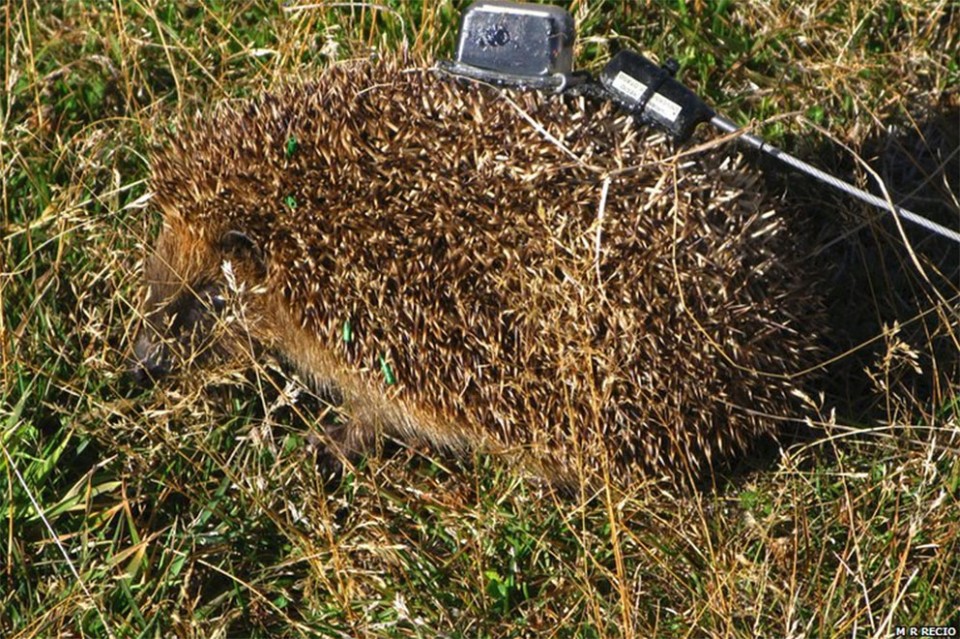
Consequently, day-to-day measurements of weight in hedgehogs is difficult to interpret in terms of health status and the scientists performed some regression analyses of their data; weight loss tended to level off after about 30 days in the wild.
Courtship was observed between wild and released animals and one of the released females was observed mating with a wild male – six weeks into the study, palpation under anaesthetic suggested that three of the released females were pregnant. By the close of the study five animals were known to have died, three eaten by badgers and two killed on roads, a further two had been lost, one had to be euthanized when it became ill, and four were alive and living within the study area. Overall, Morris and Warwick concluded:
“This study provides reassurance that released, naïve juvenile hedgehogs can cope with life in the wild and do not simply starve or suffer disorientation and distress. It also shows that these animals, despite lack of previous experience, can interact normally with each other and with wild conspecifics.”
Keep on runnin’
These studies have shown sudden long distance migrations away from the study site, which raise the question of whether the hedgehogs were moving away searching for more familiar habitat. In order to address this, Pat Morris led the radio-tracking of another batch of 13 overwintered hedgehogs on the Channel Islands. The animals were released into a garden bordering farmland at Mont a L’Abbé on Jersey during April 1995; six were originally found at the site, while the remaining seven were from other locations around the island. The aim of the study was to see whether ‘locals’ fared better after release than those from further afield. The juveniles found their way around without any obvious problems, built nests and located food regardless of whether they were locals or not. As with the previous studies, weight loss was observed, but appeared to stabilise after two or three weeks, with most animals having lost 10% to 20% of their release weight. Again, mixing with the wild population was observed and no aggressive interactions were witnessed.
Overall, the biologists found that being local had no significant influence on whether hedgehogs made long distance migrations, although none of the three animals to disappear from the study site were locals, and they concluded that the hedgehog population may just have some individuals that are transient by nature. None of the animals were known to have died, although they lost radio contact with two individuals during the first two weeks. Nine of the animals could be located six-and-a-half weeks into the study and one was recaptured more than five kilometres (2 miles) from the release site ten weeks later.
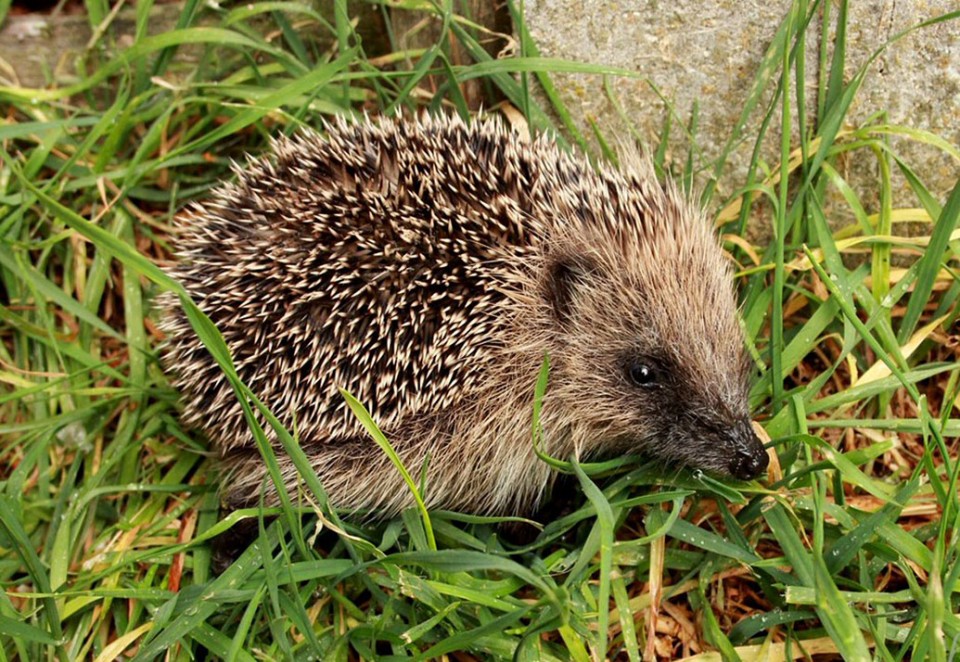
So, from the above it seems that hedgehogs, be they seasoned adults or naïve juveniles, can do well when released back into the wild. The observation that the weight loss stabilised after a couple of weeks suggests that the animals were losing the excess weight accumulated in captivity, where they had plentiful food and little exercise; in the wild the animals were burning calories moving around more and engaging themselves in other activities such as nest building, socialising and self-anointing, which reduced the time spent foraging. Moreover, none of the hedgehogs were observed to forage during the day, which is a classic sign of failing to find sufficient food, while the food and nest boxes at the soft release sites were largely ignored. Indeed, writing about his study on Jersey in the journal Animal Welfare during 1997, Morris explained:
“Initial weight loss occurs, but stabilizes after 2-3 weeks. It is not a symptom of starvation but represents the loss of excess weight gained in captivity.”
In other words, the hogs that had been ‘fed up’ in captivity were slimming down to their normal, wild body weight.
Town hedgehog, country hedgehog
Up to this point, all the tracking studies have followed the fortunes of hedgehogs released into pasture land and mixed farmland, so the jury was still out on how individuals would fare if released into potentially less favourable habitat, such as a town or city. In a bid to get a handle on this, Nigel Reeve tracked 12 hedgehogs from wildlife rescue centres in Surrey and Lincolnshire. All animals were released during June 1995 following a health check and transmitter attachment. Ten were released into an area with a low natural hedgehog density in Surrey; a woodland flanked by a golf course, arable farmland and coarse grassland. The remaining two were set free in Reeve’s garden in an urban area of Byfleet, which has an established hedgehog population. The woodland group were radio-tracked for about four months (15.5 weeks for the woodland group, 15.5 and 19 weeks for the urban animals). The results were published in Animal Welfare during 1998.

Reeve found that, as with Pat Morris’ animals, there was a “clear pattern of initial and dramatic weight loss for the first 3-5 weeks, followed by a period of recovery”, although not all animals suffered a net loss of weight and one was 113% of its release weight by the end of August. Of his 13 subjects seven died, although none obviously from being ill prepared for life in the wild. Four were run over, two were predated, one drowned and one died of pneumonia and inflammation of the heart. Radio contact was lost with two other animals, but there was no evidence to suggest that they died. One of the ‘lost’ animals had been released into the urban area; the other urban release was found to be pregnant and survived to the end of the study. Overall, the survival rates were 83%, 75%, 42% and 25% (or 42% if both ‘lost’ animals survived) at the end of weeks two, four, eight and 15, respectively.
Despite the initial weight loss that Reeve observed, all the animals released into the woodland stabilized at, and maintained, a weight of 600–900g (1 lb 5 oz. to 2 lbs), which fitted well with the average weight of 509g (1 lb 2 oz.) from a sample of wild hedgehogs of the same age. These hedgehogs were also observed to disperse widely (up to 3 km / 2 mi.) and Reeve considered several possible explanations for this, including unsuitable habitat, presence of badgers acting as a deterrent (see QA) and that a drop in body weight somehow triggers dispersal.
In the end Reeve arrived at were two intriguing possibilities: either the hedgehogs went looking for mates; or the hedgehogs actively sought out areas of human habitation. The image created from most tracking studies suggests that female hedgehogs are pretty sedentary, sticking to a fairly small home range while the males do all the leg work looking for them. If Reeve’s first hypothesis is correct, it suggests that this may not be the case; the females may have moved away from the wood looking for males. In terms of the second theory, it is interesting to note that all the released animals, except three of those that died during the study, ended up in urban or suburban areas; the possible reasons for this include increased food availability, lower badger densities and grerater nest site availability.
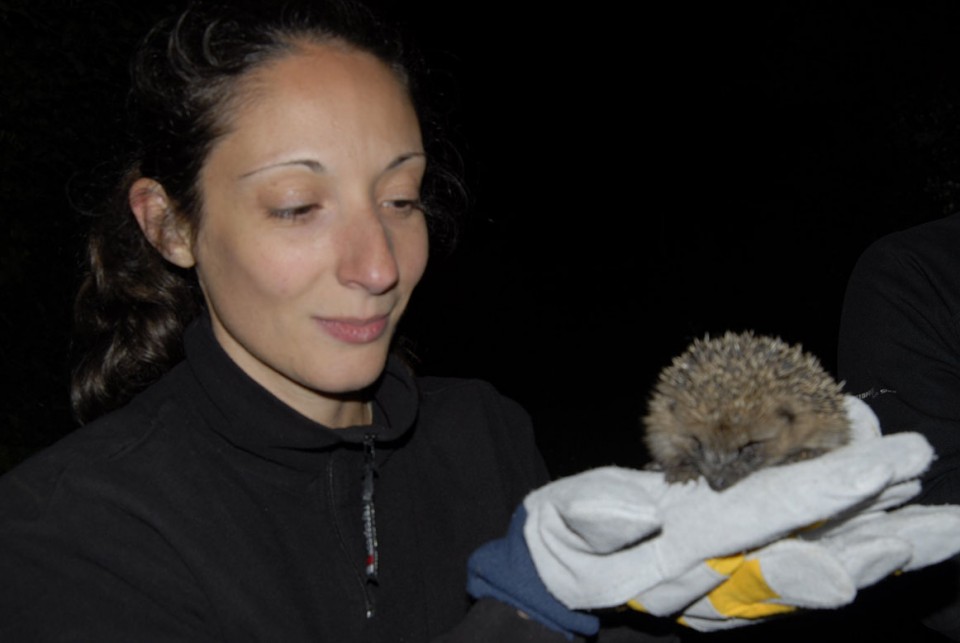
In his conclusion Reeve wrote: “The low overall survival rates of hedgehogs released from captivity are serious cause for concern.” Nonetheless, he goes on to say that it should be remembered how, were it not for human intervention, these animals would almost certainly be dead anyway. This is a sentiment echoed by Pat Morris in his New Hedgehog Book, in which he reminds us that:
“Natural mortality among hedgehogs is 20-30% per year. We can rehabilitate hedgehogs, but we cannot confer immortality and many will die. To believe otherwise is wishful thinking.”
He goes on to say:
“The key point is that at least a third of our animals survived a minimum of two and a half months after release, despite having had no previous experience of the wild.”
It should also be remembered that despite Reeve’s study, we still know very little about what happens to hedgehogs released into parks and gardens. Furthermore, when we consider the high mortality of released hedgehogs we should remember that, as Morris alludes to, simply being a hedgehog is a seriously risky business; being run over by a car or killed by a predator is unfortunate, but invariably it could happen to any animal, rehabilitated or wild.
Too tame?

Critics of releasing rehabilitated animals back into the wild have often argued that their prolonged contact with humans may lead to increased tameness, which could contribute to a premature death in the wild. This is certainly of concern when releasing hedgehogs and, in The New Hedgehog Book, Pat Morris notes that some of the hedgehogs they tracked became so used to being handled that they barely bothered rolling up when captured each night for weighing. Nonetheless, the only confirmed cases of predation during Morris’ studies were by badgers, against which even a tightly-rolled hedgehog stands little chance, and there is no evidence to suggest that failing to roll up when picked up by humans is likely to make the animals less cautious to predators. Erring on the side of caution, however, Morris notes that not allowing a captive hedgehog destined for release to become too tame is probably for the best.
Restocking the mainland
Following the announcement from Scottish Natural History in 2002 that it intended to instigate a controversial culling plan aimed at protecting island-nesting seabirds from the egg-eating antics of hedgehogs introduced to the Scottish Outer Hebrides islands of North Uist, Benbecula and South Uist, conservationists from several welfare organisations (including the British Hedgehog Preservation Society and Advocates for Animals) joined forces to form the Uist Hedgehog Rescue. The aim of UHR is to rescue hedgehogs from the culling zones and relocate them on the Scottish mainland.
Despite the previous studies we’ve already reviewed, pro-cull supporters considered that translocation was a cruel procedure that would lead to the disorientation and death of hundreds of hedgehogs. The main basis of this argument was an ecological phenomenon referred to as density dependant population regulation. The idea is that a given area of land can only support a set number of animals (a figure referred to as the “carrying capacity”, often abbreviated to “K” by population ecologists). If the number of a given animal on this area of land increases above the carrying capacity, the population runs out of one, or several, vital resources (e.g. food, water, shelter, etc.) or as is common in high density populations, the spread of diseases increases and the animals start to die. The reverse is also true: if a population falls below the carrying capacity there is, all things equal, scope for population growth. Basically, the suggestion was that adding more hedgehogs to the mainland would increase competition for food and other resources and lead to many of them dying of starvation or disease.
The idea that animals released back into the wild wouldn’t fare well is not an unjustified one. Using ringing and recovery data for a population of barn owls (Tyto alba) in Spain, a team of biologists at the College Marcelo Spínola’s Department of Animal Biodiversity observed a “massive mortality” during the first four weeks after release, after which released owls had a survival probability equal to their wild counterparts. Similarly, Bristol University biologists Charles Robinson and Stephen Harris found that orphaned fox cubs released back into the wild between 1989 and 1992 survived an average of three months, with road traffic accidents forming a major component of mortality. Still, as we have seen, the previous experiments on hedgehog releases suggest it can be very successful.
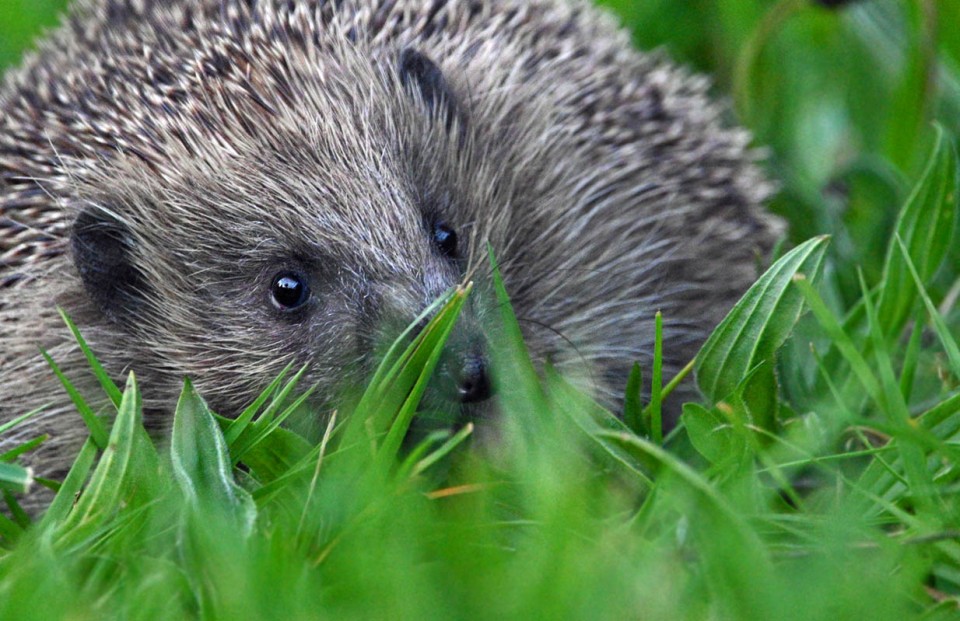
Nonetheless, in a bid to investigate the feasibility of moving hedgehogs from the islands to the mainland several studies were undertaken – perhaps the two main examples are those carried out by zoologists Susie Molony, Claire Dowding, Phil Baker, Innes Cuthill and Stephen Harris at the University of Bristol and Hugh Warwick, Pat Morris and Doug Walker (for the purposes of this article, "Team Warwick").
During March 2004, the Bristol University zoologists released 109 hedgehogs into gardens in suburban Bristol. Twenty hedgehogs had spent over a month at a wildlife hospital; 43 were caught on the Uists, of which 20 were in captivity for less than a week and 23 for more than a month; 20 were captured some 50m (164 ft.) away from the release sites; and 26 captured at the release sites. Each animal was fitted with a radio-transmitter before being soft-released. In common with every other release study, the animals lost weight after release, but the biologists found an interesting trend.
Those animals taken directly from the Uists and released into Bristol having spent less than a week in captivity (the direct-translocated group) lost up to one-third of their body weight during the study, while those that were taken from the Uists and kept in captivity for more than a month before being released only lost about 8% (less than the wild hedgehogs from the same area). Overall, the direct-translocated group were also significantly less active than the other groups during the study; none of the translocated hedgehogs had average nightly ranges as large as the free-living wild animals. So, in a nutshell, this study found that the hedgehogs kept in captivity for a few weeks prior to being released had a better chance of survival than those that are scooped up from Uist and dumped on to the mainland less than a week later. In their conclusion, published in Biological Conservation in 2006, the biologists wrote:
“… this study has indicated that individuals held in captivity prior to translocation, whether they have been treated for an injury or not, had a better survival rate following release than individuals that were translocated with a minimum time spent in captivity.”

They also noted:
“No evidence was found for intra-specific [hedgehog vs. hedgehog] competition between introduced individuals and the recipient wild hedgehog population.”
Just over a year after the Bristol biologists conducted their study, Team Warwick undertook theirs. Warwick and his colleagues took 20 female hedgehogs that had been caught on the Uists in April of 2005, gave them a health check, fitted a radio-transmitter and released them into Eglinton Country Park in Irvine (North Ayrshire, Scotland) in two batches. A month later, at the end of the study, 13 hedgehogs (65%) were still alive and one had “vanished” (70% survival if we assume she was still alive at this point). The remaining six animals died; two were killed by predators, one drowned, one died of bladder cancer and two others were returned to the rescue centre where they later died. More interestingly, only three animals showed any significant weight loss during the study and eight of the nine indigenous male hedgehogs that they found during their sampling were associated with radio-tagged females. Upon weighing the males Team Warwick established that there was nothing to suggest that the resident population was losing weight following the release of the females. Eleven of the released animals were found with local males at some point and one was observed courting with one male on four occasions. Ultimately, Team Warwick found no evidence to support the pro-cull argument.
There is some evidence to suggest that, in some locations at least, an artificially high hedgehog population may lead to increased mortality. The mortality isn’t, however, associated with disease or competition for resources; rather it relates to predation. The issue of predator, specifically badger and fox, impact on hedgehog populations is discussed elsewhere (see QA), but one 1994 study by Patrick Doncaster at Southampton University found that when he increased the number of hedgehogs in an area of his survey site the number of animals eaten by badgers during the first two weeks was substantially higher than the ‘natural’ population he monitored at the same time. Doncaster also observed that dispersal of males away from the site resulted in the population falling close to its original level within a month.
To release or not to release
Most hedgehog rescuers treat their patients with a goal of releasing them back into the wild – after all, if they never released their charges, they would soon run out of room and need to start euthanizing patients. Indeed, Vale Wildlife Hospital in Gloucestershire take in 800-1,000 hedgehogs each year and release 90% back into the wild; the highest release rate of any other species they care for. The decision to release an animal back into the wild is not taken lightly and, in The Complete Hedgehog, Les Stocker wrote:
“I insist on releasing any patient which is treated at St Tiggywinkles but always with the proviso that it is 100 per cent fit and fully capable of looking after itself.”
This sums up the situation well: the animal should only be released if it’s healthy enough to fend for itself. But, how do you know when an animal has reached this condition? What does a “100 per cent fit” hedgehog look like? Well, there are certain obvious features – wounds should have healed, fractures have set, spines have re-grown, parasites have been removed (even though they’ll probably pick new ones up very quickly upon return to the wild), and so forth. For most people without access to a veterinary laboratory, checking that animals are clear of internal maladies (tumours, blood poisoning, internal parasites, etc.) is nigh-on impossible and is one of those aspects that cannot be controlled. There does, however, appear to be one crucial factor to consider prior to releasing your charge: its weight.

We have seen that the bulk of hedgehogs lose weight when first released back into the wild and that this is most probably them shedding the excess pounds accumulated while in captivity. Underweight animals do, however, seem to fare less well than their heavier counterparts. This has led to various calculations of an ‘ideal’ (really, a minimum) release weight, below which the probability of survival is very low. Perhaps the first person to look at this weight was Pat Morris, who presented his calculations in a 1984 paper to the Journal of Zoology. Morris arrived at a weight of 400g (14 oz.) based on the weights of hedgehogs surviving hibernation and a 25% loss of their body weight during this period – so, any hog weighing less than 400g when released would be unlikely to survive winter in Britain. Morris noted that 400g was a minimum estimate and the figure should possibly be raised to 450g (1 lb.) in order to account for very cold winters. Indeed, in their Uist translocation study (Lutra, 2006), team Warwick wrote:
“It may be the case that female hedgehogs weighing less than 500g [1 lb. 2 oz.] in April are not viable.”
Nowadays, Morris’ weight guestimate is, however, considered too low by many carers, who advocate that adult animals weigh at least 600g (1 lb. 5 oz.) before released. I have seen some hog carers who insist a hedgehog should weigh 800g (1 lb. 13 oz.) before it is released. As Pat Morris pointed out at the PTES Day of the Hedgehog conference in November 2015, such high weights may result in hedgehogs being rescued that don’t actually need rescuing, but most rescues agree that with modern threats and climate changes 450g is no longer a suitably heavy hedgehog.
In her 2001 paper to the Journal of Wildlife Rehabilitation, Toni Bunnell argued for a somewhat different approach. Bunnell looked at 57 hedgehogs that arrived at her sanctuary in York between June and December 2000 and noticed that some weighed 700g (1.5 lbs.) but showed signs of being emaciated, presenting with protruding ribs – this led her to look for an alternative measure of whether a hedgehog is fit for release. If you carefully measure a tightly-curled hedgehog and divide its waist measurement by its length (i.e. from nose to tail) you arrive at the animal’s “Bunnell Index” (BI). A BI of less than 0.80 suggests that your hedgehog is underweight and, according to Bunnell’s data, hedgehogs with a BI of 0.81 are significantly more likely to survive to release than those with a BI of 0.76. It seems, however, that weight is still an important feature and should be considered in conjunction with the animal’s BI. In her discussion, Bunnell explains:
“It is actually preferable to release animals with a minimum weight of 650g [1 lb. 7 oz.] and a BI of 0.83 or more as this will give them a better chance of surviving during temporary unavailability of food.”
Where, when and how?
Once a hedgehog has reached a suitable condition for release, the final consideration is the release itself. Where should you release it? When is the best time to release it? Should you hard- or soft-release it?

The first two of these questions are relatively easy to answer based on the tracking studies we’ve already reviewed. Hedgehogs should be released into good hedgehog habitat -- this can include back gardens, parks, cemeteries, pasture land, etc. – and, ideally, release sites shouldn’t be very close to badger setts or motorways. In his New Hedgehog Book, Pat Morris wrote of how he came under criticism for releasing hedgehogs into areas where badgers have been reported. Badger numbers have, however, increased significantly since the passing of the Protection of Badgers Act in 1992, making it almost impossible to release them somewhere that they couldn’t possibly meet a badger. Moreover, we have seen that released hedgehogs may undertake considerable dispersal movements, which will probably nullify even the best attempts to release them away from badgers and roads. Nonetheless, if an area without either high badger numbers or very close proximity to a main road can be chosen, all the better. If possible, you should also pick a place with plenty of cover (hedges, long grass, brambles, etc.) to provide suitable nesting spots.
When it comes to the best time to release your charge, this is invariably at dusk in order to allow as much time as possible to become familiar with the area and the best places to eat before the sun comes up. Most animal welfare charities recommend choosing a mild or warm night for the release; wet or muggy weather is better than dry because it provides the hedgehogs with a variety of different, very accessible, foods. If you’re releasing your hedgehog during autumn or winter, which is not ideal, it is all the more crucial that it has been sufficiently ‘fed up’ prior to letting it go and that you avoid releasing the animal during periods of snow or a heavy frost.
The various experiments carried out on released hedgehogs share a commonality: in all cases, food or nest boxes left out during a soft-release were ignored. So, should you bother if such things seem to make no difference? The answer is yes! Each hedgehog is an individual and yours may appreciate a few handfuls of leaves left out for nesting material or a plate of dog food or water in the evening. Moreover, other hedgehogs in the area may appreciate these even if yours doesn’t.
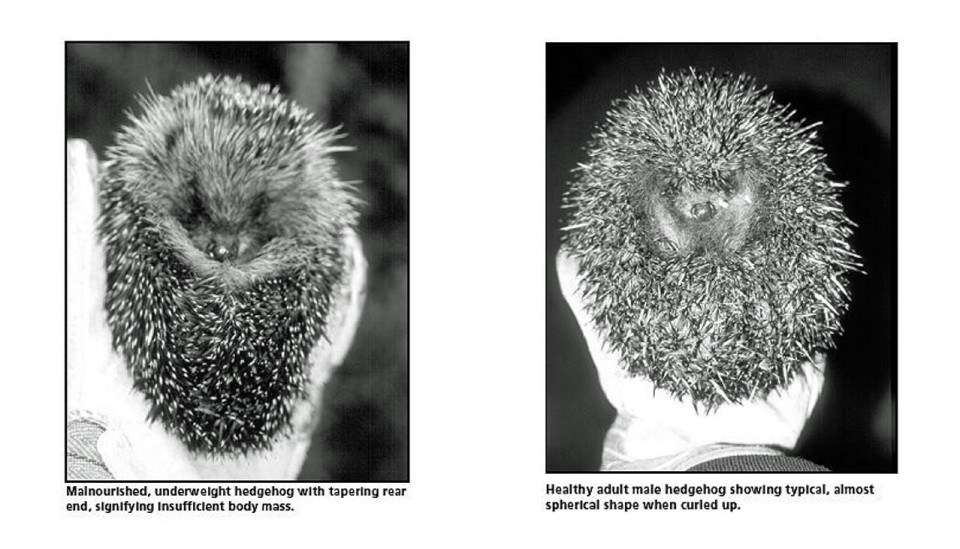
Whether you decide to leave provisions out or not, there are a couple of steps you can take to acclimate your hedgehog prior to release. In The Complete Hedgehog, Les Stocker notes that, having spent several weeks in a nice warm house or garage, hedgehogs can be moved outside in their cages to acclimatize to the cool night air; during this time, they should continue to be fed. Some carers who have walled gardens release their patients into the garden for a couple of nights prior to releasing them at their chosen site – this gets the hedgehog used to moving around and looking for food in the evening.
The non-returnables
There are always going to be those animals that cannot be returned to the wild; those that are seriously debilitated having lost front legs or other important parts, or those that are blind. That said, Pat Morris has tracked a blind hedgehog in the wild and found that, aside from bumping into things, it survived well, while Brackley Hogwatch in Northamptonshire recently tracked (image above) a three-legged hedgehog over several weeks that travelled widely and seemed to prosper. Hedgehogs lacking spines or the ability to curl up should also be considered non-returnable. In these cases, a walled garden is invariably the best choice; it gives the animal a reasonable amount of freedom while also offering some protection. Where such a facility isn’t available, you should contact your local animal shelter to discuss options – they may be able to offer your patient a home. Hedgehogs kept in a secure garden and provisioned with food as necessary can thrive, surviving for many years.
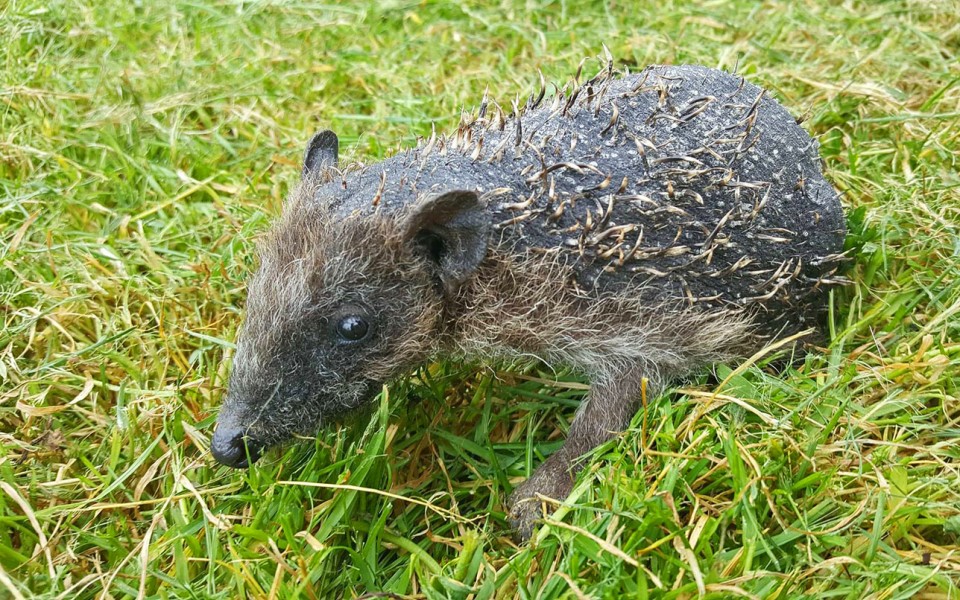
In conclusion…
The end result of all this is that it is both reasonable and practicable to release hedgehogs back into the wild following treatment or rehabilitation and think that they stand a pretty good chance of survival. Sure, some won’t make it, being a wild animal is a dangerous occupation; but many will and, in the end, without the help of dedicated volunteers they wouldn’t get that second chance.